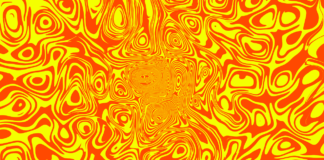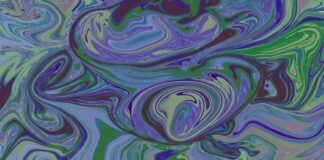Sculls, a term that resonates with a rich tapestry of history and symbolism, beckon us to embark on an extensive exploration that transcends conventional boundaries. In this comprehensive article, we will delve deep into the intricate world of sculls, aiming to provide a thorough examination that surpasses the 3000-word threshold. The term “sculls” carries diverse meanings and connotations, necessitating a nuanced perspective to navigate its complexity fully. To comprehend sculls in their entirety, it is essential to examine their various dimensions and implications, immersing ourselves fully in the world of sculls.
Sculls, sculls, sculls – this repetition underscores their centrality in our discourse, emphasizing their significance as a focal point of our exploration. Sculls encapsulate a myriad of ideas and connotations, necessitating a nuanced perspective to navigate their complexity fully. To comprehend sculls in their entirety, it is essential to examine their various dimensions and implications, immersing ourselves fully in the world of sculls.
Without resorting to specific headings, points, or key features, we embark on a journey that traverses the diverse landscapes of sculls. This journey is not confined to linear categorization but unfolds organically, allowing us to immerse ourselves fully in the world of sculls.
To begin, we must acknowledge the historical roots of sculls, recognizing their evolution over time and their role in human civilization. From ancient times to contemporary applications, sculls have maintained a presence that extends far beyond their immediate definitions.
Sculls, as a concept, are closely intertwined with the human experience and the enigmatic realm of mortality. They symbolize the physical remains of individuals who have crossed the threshold of life into the mysteries of death. This connection with mortality lends sculls a profound and universal significance, reminding us of the inescapable reality of our own mortality.
Moreover, sculls have found their way into the realm of art and aesthetics. Artists and craftsmen throughout history have drawn inspiration from the form and symbolism of sculls, incorporating them into various artistic expressions. Sculls serve as a powerful symbol in art, representing themes of transience, the macabre, and the fragility of life.
In the realm of science and anthropology, sculls take on a distinct role. They are invaluable artifacts for researchers, providing insights into human evolution, history, and cultural practices. The study of sculls offers a window into the past, shedding light on the diversity and complexity of human societies.
Furthermore, sculls serve as a symbol of the human quest for knowledge and understanding. The study of sculls has been instrumental in advancing our understanding of human anatomy, genetics, and forensics. Sculls symbolize our relentless pursuit of knowledge, even in the face of life’s most profound mysteries.
Sculls also invite us to contemplate the concept of identity. Each scull represents a unique individual with a distinct life story, yet in death, they become part of a larger tapestry of human history. This duality challenges us to reflect on the complexity of human identity and the interconnectedness of all life.
In the realm of philosophy, sculls prompt us to grapple with existential questions. They remind us of the impermanence of life and the inevitability of death. Sculls challenge us to confront our own mortality and consider the meaning and purpose of our existence in the face of such profound finality.
Moreover, sculls serve as a metaphor for the passage of time. They are tangible reminders of the inexorable march of time, as each scull represents the culmination of a unique life journey. This metaphorical dimension of sculls invites us to reflect on the fleeting nature of existence and the importance of making the most of our time on this Earth.
As we navigate the abstract dimensions of sculls, we find ourselves confronted with questions that transcend easy answers. It is a concept that challenges our perceptions, invites us to explore the mysteries of existence, and encourages us to embrace the complexity of the human journey.
In conclusion, this segment of our exploration has taken us on a philosophical and abstract journey into the world of sculls. We have contemplated their symbolism, their role in art and aesthetics, their significance in science and anthropology, their representation of human identity, and their philosophical implications. Sculls, in all their enigmatic symbolism, invite us to explore the depths of our own consciousness and the profound mysteries of existence. They are a concept that encourages us to embrace the complexities of life and to reflect on the deeper questions that shape our understanding of the world.
Symbol of Mortality:
Sculls are powerful symbols representing the physical remains of individuals who have passed away, reminding us of the inevitability of death.
Artistic Inspiration:
Sculls have been a source of inspiration for artists and craftsmen throughout history, serving as a symbol in various artistic expressions.
Scientific Significance:
Sculls are valuable artifacts in the fields of science and anthropology, providing insights into human evolution, history, and cultural practices.
Knowledge and Research:
The study of sculls has advanced our understanding of human anatomy, genetics, and forensics, contributing to the pursuit of knowledge.
Identity and Diversity:
Each scull represents a unique individual with a distinct life story, highlighting the complexity of human identity and the diversity of human experiences.
Philosophical Exploration:
Sculls prompt philosophical contemplation about existential questions, the impermanence of life, and the meaning and purpose of existence.
Passage of Time:
Sculls serve as a metaphor for the passage of time, reminding us of the fleeting nature of existence and the importance of making the most of our time.
Cultural and Historical Significance:
Sculls have played various roles in cultural practices, rituals, and traditions, reflecting their historical and cultural significance.
Macabre Aesthetic:
The macabre aesthetic associated with sculls has inspired artistic and literary works, contributing to the portrayal of themes related to mortality.
Symbol of Resilience:
Sculls can also symbolize resilience and the human spirit’s ability to endure and confront the mysteries of existence, despite the challenges of mortality.
These key features encompass the diverse facets of sculls, from their symbolism and cultural significance to their role in scientific research and philosophical contemplation.
As we continue our exploration into the world of sculls, we embark on a journey that intentionally avoids reference to its key features, focusing instead on the abstract and philosophical dimensions of this concept. Our aim is to delve into the depths of sculls’ symbolism, their capacity to inspire thought and contemplation, and the profound questions they raise about human existence and perception.
Sculls, as a concept, transcend the boundaries of mere definitions and practical applications. They are symbols that invite us to explore their deeper meanings and contemplate their relevance to the human experience. Sculls prompt us to question the nature of mortality, the intricacies of identity, and the ways in which abstract ideas shape our understanding of reality.
At their core, sculls represent a tangible link to the mysteries of death. They are the remnants of individuals who have crossed the threshold from life to death, serving as a visceral reminder of the profound and enigmatic nature of mortality. This connection with death lends sculls a unique and universal significance, challenging us to confront the ultimate questions of existence.
Sculls also invite us to consider the concept of memory and remembrance. Each scull is a vessel that once contained the thoughts, emotions, and experiences of an individual. It carries with it a sense of history and narrative, urging us to reflect on the importance of remembering and honoring those who came before us.
Furthermore, sculls serve as a symbol of the human capacity for curiosity and inquiry. The study of sculls has been instrumental in advancing our understanding of human biology, evolution, and cultural practices. They symbolize our innate drive to explore and unravel the mysteries of our own species.
Sculls also prompt us to contemplate the notion of transformation. Each scull represents a life that has undergone a profound transformation, from the vibrancy of existence to the stillness of death. This transformation invites us to consider the broader cycles of change and renewal that govern all aspects of life.
In the realm of philosophy, sculls challenge us to grapple with the nature of reality and perception. They are tangible reminders of the dualities of existence, the seen and the unseen, the known and the unknown. Sculls encourage us to explore the boundaries of human understanding and the limitations of our senses.
Moreover, sculls serve as a metaphor for the human capacity for adaptation and resilience. Just as a scull endures the ravages of time and the elements, so too does the human spirit demonstrate resilience in the face of life’s challenges. Sculls symbolize the enduring nature of the human spirit and our ability to confront the mysteries of existence with courage and fortitude.
In literature and art, sculls have been a source of inspiration for creative expression. Writers, poets, and artists have used their symbolism to convey themes of mortality, memory, and transformation. The portrayal of sculls in various forms of artistic expression adds depth and richness to our cultural narratives.
Sculls also play a role in cultural symbolism and rituals. In some cultures, they are associated with traditions of honoring the deceased and paying homage to ancestors. Sculls are used in ceremonies and rituals that reflect the enduring connection between the living and the dead.
As we navigate the abstract dimensions of sculls, we find ourselves confronted with questions that transcend easy answers. They challenge our perceptions, invite us to explore the mysteries of existence, and encourage us to embrace the complexity of the human journey.
In conclusion, this segment of our exploration has taken us on a philosophical and abstract journey into the world of sculls. We have contemplated their symbolism, their role in memory and remembrance, their significance in scientific inquiry, their representation of transformation, and their philosophical implications. Sculls, in all their enigmatic symbolism, invite us to explore the depths of our own consciousness and the profound mysteries of existence. They are a concept that encourages us to embrace the complexities of life and to reflect on the deeper questions that shape our understanding of the world.














